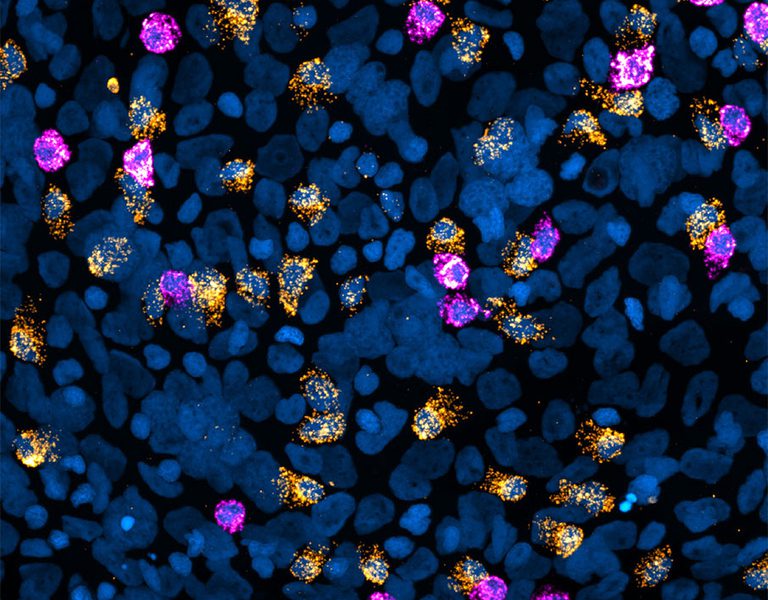Because zebrafish are transparent during development and have accessible sensory organ systems, scientists can visualize, as well as genetically sequence and modify, each neuromast cell. This allows them to investigate the mechanisms of stem cell renewal, the proliferation of progenitor cells — direct precursors to hair cells — and hair cell regeneration.
“We can manipulate genes and test which ones are important for regeneration,” said Piotrowski. “By understanding how these cells regenerate in zebrafish, we hope to identify why similar regeneration does not occur in mammals and whether it might be possible to encourage this process in the future.”
Two key populations of support cells contribute to regeneration within neuromasts: active stem cells at the neuromast’s edge and progenitor cells near the center. These cells divide symmetrically, which allows the neuromast to continuously make new hair cells while not depleting its stem cells. The team used a sequencing technique to determine which genes were active in each type and found two distinct cyclinD genes present in only one or the other population.
The researchers then genetically altered each gene in the stem and progenitor populations. They discovered that the different cyclinD genes were independently regulating cell division of the two types of cells.
“When we rendered one of these genes non-functional, only one population stopped dividing,” said Piotrowski. “This finding shows that different groups of cells within an organ can be controlled separately, which may help scientists understand cell growth in other tissues, such as the intestine or blood.”
Progenitor cells lacking their cell type-specific cyclinD gene did not proliferate; however, they did form a hair cell, uncoupling cell division with differentiation. Notably, when the stem cell-specific cyclinD gene was engineered to work in progenitor cells, progenitor cell division was restored.
David Raible, Ph.D., a professor at the University of Washington who studies the zebrafish lateral line sensory system, commented on the significance of the new study. “This work illuminates an elegant mechanism for maintaining neuromast stem cells while promoting hair cell regeneration. It may help us investigate whether similar processes exist or could be activated in mammals.”
Because cyclinD genes also regulate proliferation in many human cells, like those in the gut and blood, the team’s findings may have implications beyond hair cell regeneration.
“Insights from zebrafish hair cell regeneration could eventually inform research on other organs and tissues, both those that naturally regenerate and those that do not,” said Piotrowski.
Additional authors include Ya-Yin Tsai, Shiyuan Chen, Daniela Münch, Julia Peloggia, Ph.D., and Jeremy Sandler, Ph.D.
This work was funded by the National Institute on Deafness and Other Communication Disorders of the National Institutes of Health (NIH) (award: 1R01DC015488-01A1), the Hearing Health Foundation, and with institutional support from the Stowers Institute for Medical Research. The content is solely the responsibility of the authors and does not necessarily represent the official views of the NIH.
About the Stowers Institute for Medical Research
Founded in 1994 through the generosity of Jim Stowers, founder of American Century Investments, and his wife, Virginia, the Stowers Institute for Medical Research is a non-profit, biomedical research organization with a focus on foundational research. Its mission is to expand our understanding of the secrets of life and improve life’s quality through innovative approaches to the causes, treatment, and prevention of diseases.
The Institute consists of 20 independent research programs. Of the approximately 500 members, over 370 are scientific staff that include principal investigators, technology center directors, postdoctoral scientists, graduate students, and technical support staff. Learn more about the Institute at www.stowers.org and about its graduate program at www.stowers.org/gradschool.
Media Contact:
Joe Chiodo, Director of Communications
724.462.8529
press@stowers.org



